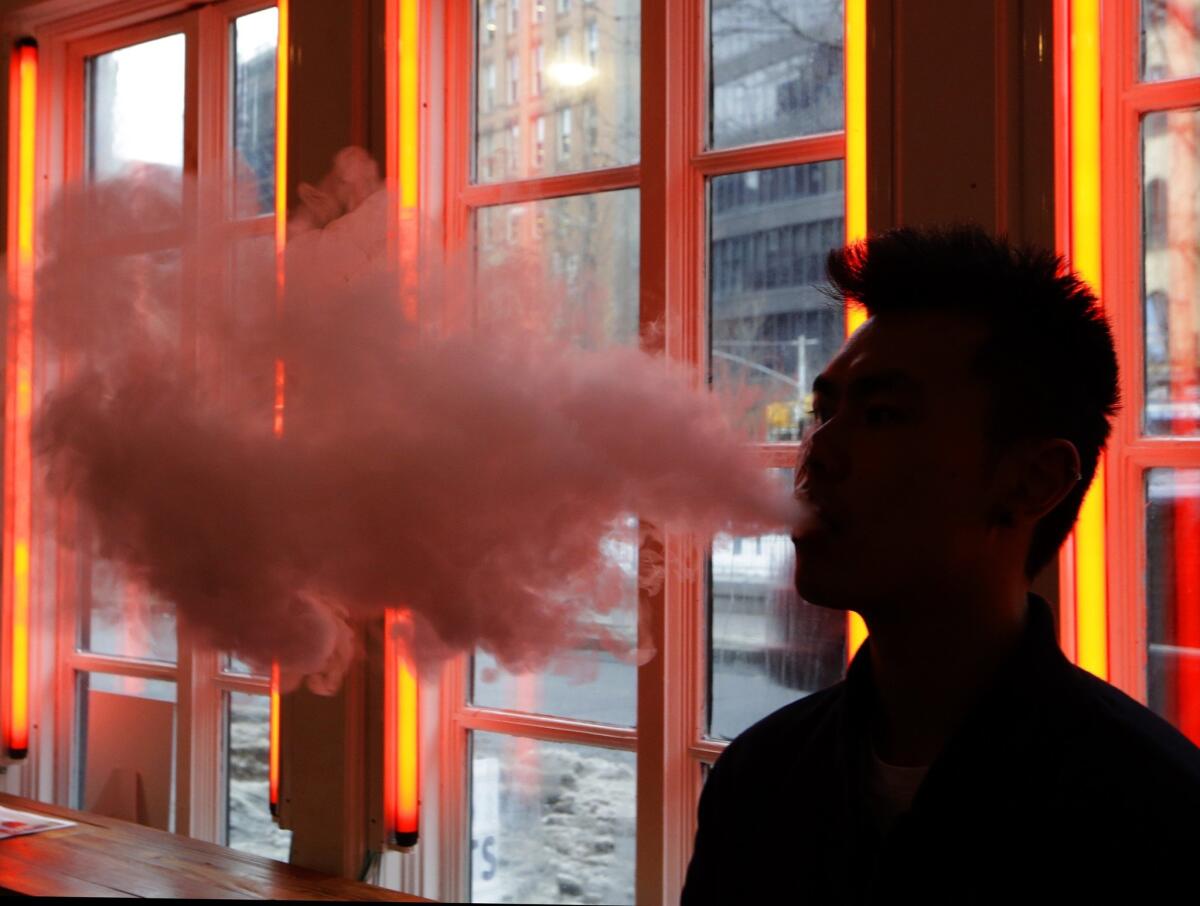California launches effort to combat use of e-cigarettes

Arguing that the rising popularity of electronic cigarettes soon will undermine California’s leadership in reducing tobacco use — and questioning the notion that the products help traditional smokers quit — state health officials on Wednesday called for tighter regulation of the devices and announced a new effort to combat their use.
Addressing “vaping” among minors and young adults, the fastest-growing group of e-cigarette devotees in the state, will be a key focus, California’s Department of Public Health noted in a 21-page report.
“Of particular concern to me is the impact of e-cigarettes on the health and safety of children, teens and young adults,” wrote state health officer Dr. Ron Chapman, adding that use among young adults ages 18 to 29 tripled between 2012 and 2013.
Electronic cigarettes work by heating and aerosolizing a nicotine-containing liquid. The devices are battery operated and often look like traditional cigarettes.
The state report noted that nicotine exposure among teens is believed to harm brain development, and that the aerosols emitted by e-cigarettes -- including second-hand aerosols --contain at least 10 chemicals known to cause cancer, birth defects or reproductive harm.
The report also criticized e-cigarette marketing, comparing its tactics and wide reach to the advertising efforts of tobacco companies before their ads were banned from television and radio.
There are no restrictions against advertising e-cigarettes via those media.
E-liquid, as the nicotine solution the devices vaporize is sometimes called, comes in flavors like chocolate, gummy bear and bubble gum — heightening the worry among officials that kids will want to pick up the habit, or might accidentally ingest the liquid thinking that is it a safe treat.
E-cigarette poisonings among children 5 and younger grew from seven in 2012 to 154 in 2014, and made up more than 60% of all e-poisoning calls, the report stated.
More to Read
Sign up for Essential California
The most important California stories and recommendations in your inbox every morning.
You may occasionally receive promotional content from the Los Angeles Times.











